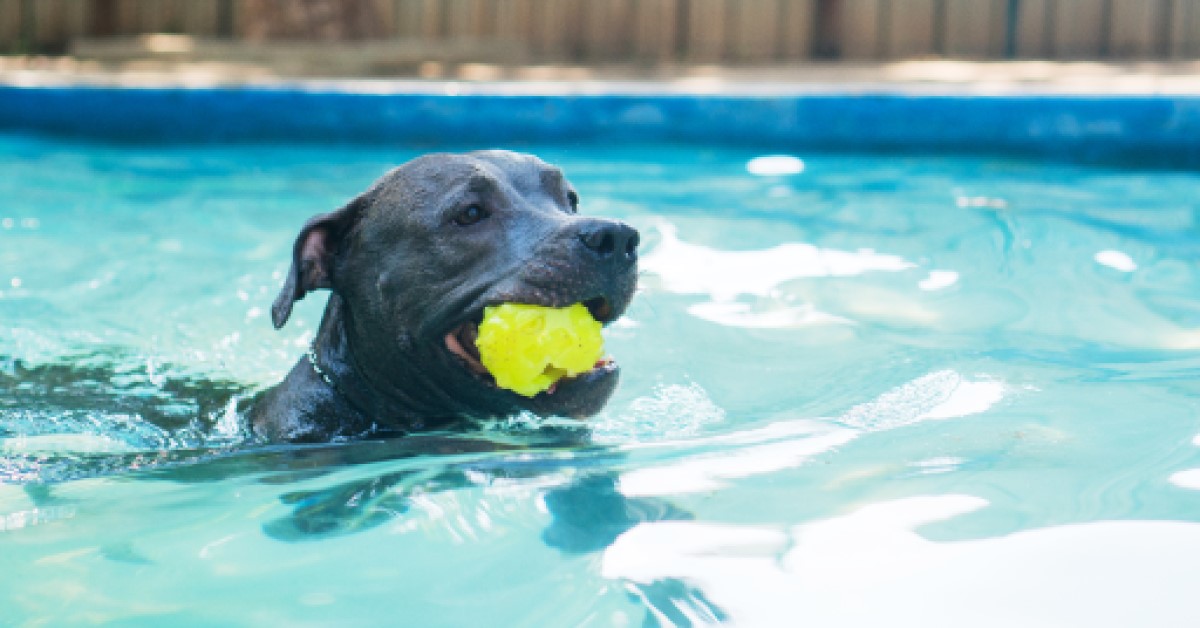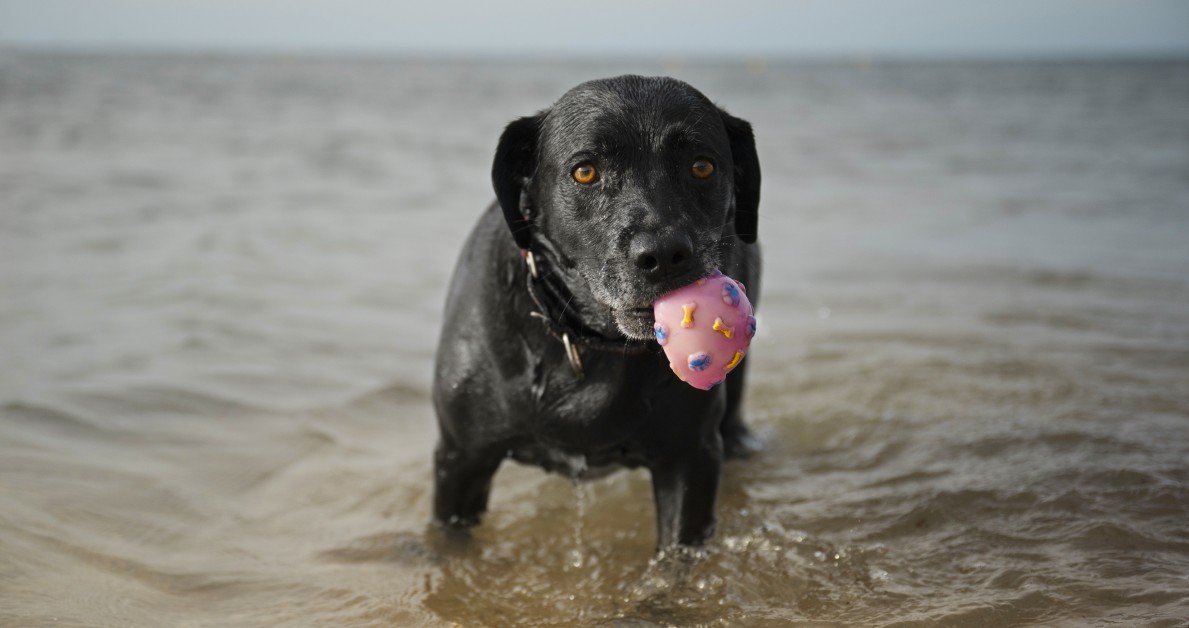Ear Care for Dogs that Like to Swim
Many dogs enjoy swimming in the summer, but water, chlorine, and certain pool chemicals can pose a risk to your pet’s sensitive ears.

Many dogs enjoy a leisurely swim when the weather is hot. Swimming not only helps cool your pet down but can also be a healthy source of exercise. However, there are some safety precautions you’ll want to take when letting your dog swim, including proper ear care before, during, and after swim sessions. Learn more about the importance of ear care for dogs and how to prepare your dog’s ears for a safe swim.
Is Swimming Safe for Your Pet?
Just like people, many dogs enjoy swimming in the summer. Swimming is a total body, low-impact workout that is easy on your pet’s limbs and joints. This makes swimming an excellent option for pups both young and old.
There’s also no better way for your pet to cool off on a hot summer day than by taking a plunge in the pool. However, you’ll want to ensure that the water is not too hot or cold as this could be a shock to your dog’s system. Warm water can help promote a full range of motion and ensure adequate blood flow, lessening your pet’s risk of injuries.
When it comes to your dog’s ears, the biggest risk is water. Similar to humans, getting water in the ears can cause irritation. Saltwater and pool chemicals like chlorine also pose a threat to your dog’s health with long-term exposure.
Can Dogs Get Swimmer’s Ear?
If you swam a lot as a kid, chances are you had swimmer’s ear at one time or another. What most people don’t know is that dogs can also develop swimmer’s ear. The unique shape of a dog’s ear makes some breeds more susceptible to developing ear infections like swimmers ear.
A dog’s L-shaped ear canal can easily trap moisture inside, resulting in bacteria buildup or yeast production that ultimately results in infection. The shape and size of a dog’s ear flaps also play a role in ear infections. Dogs that have larger, floppier ears are more prone to developing this condition.
What are the Symptoms of Ear Infections in Dogs?
If your dog enjoys swimming, you may experience a time when the water causes ear irritation or even an infection. It’s important to know what symptoms to look for to determine whether professional treatment is needed or if your pet’s condition can be treated at home.
Dog ear infections can be caused by a wide range of factors, such as viruses, bacteria, fungus spores, trauma, parasites, irritants, allergens, or foreign matter. Ear infections may affect the otitis externa, (the layer of cells lining the external ear canal), otitis media, (the middle ear), or the interna, (resulting in an inner ear canal infection).
If your dog’s ears become inflamed or infected due to swimming, he may develop one or more of the following symptoms:
- Head shaking
- Odor
- Scratching at the affected ear
- Pain
- Itchiness
- Dark discharge
- Scabs or crusting of the ear
- Swelling and redness of the ear canal
How Can I Protect My Dog’s Ears in the Pool?
1. Dry Your Dog’s Ears with a Hairdryer
One of the easiest ways to keep your pet’s ears free of moisture is to use a hairdryer after swim sessions. Turn the hairdryer to a cool setting and gently dry your pet’s ears on the lowest setting. This helps to dry up any moisture that may be inside the ear, which is especially important for long-eared dogs who are more susceptible to ear infections.
2. Clean Your Pet’s Ears Regularly
Cleaning your pet’s ears on a regular basis helps prevent a buildup of harmful bacteria. Use a commercial cleaning solution and a cotton ball and follow the instructions to clean the ears and remove accumulated debris. If you are not comfortable cleaning your pet’s ears at home, consider taking your dog to a groomer.
3. Have Excess Hair in the Ears Removed
While at the groomer’s, ask to have any excess hair in the ears removed. Excess hair in the ears can hold onto moisture, increasing your pet’s risk of developing inflammation or an infection. Professional ear cleanings help to remove excess hair, wax, and other debris in the ears.
4. Bathe Your Dog After Swim Sessions
The average swimming pool contains chlorine and other pool chemicals that can dry out and irritate the skin, including the skin on your dog’s ears. Overexposure to these chemicals can cause your pet’s skin to flake and itch. To minimize irritation, it’s important to bathe your pet after going swimming to help wash away these chemicals.
5. Feed Your Dog an Ear-Healthy Diet
Did you know that what you feed your pet can have a major impact on his ear health? Daily omega-3 fatty supplements have been known to improve the ear health of dogs by reducing inflammation and lessening the likelihood of ear infections. Omega-3 fatty acids, such as those found in fish oil supplements, can also reduce skin allergies.
When to Contact a Vet About Your Dog’s Ear Infection
If you suspect that your dog has an ear infection or other ear-related problem after swimming, it’s important to contact your vet for guidance. Your vet will inspect your pet’s ears and recommend treatment if needed to keep your dog healthy and happy.
Ready to start saving money on pet wellness care?
Then take a look at Mint Wellness, the pet wellness plan that provides fast reimbursement on routine pet care. Save on vaccinations, wellness exams, preventatives, dental, and more!
Learn More


